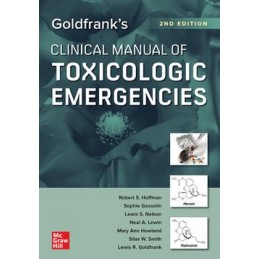- Reduced price

Order to parcel locker

easy pay


 Delivery policy
Delivery policy
Choose Paczkomat Inpost, Orlen Paczka, DHL, DPD or Poczta Polska. Click for more details
 Security policy
Security policy
Pay with a quick bank transfer, payment card or cash on delivery. Click for more details
 Return policy
Return policy
If you are a consumer, you can return the goods within 14 days. Click for more details
Derived from the definitive guide to medical toxicology, this hands-on companion provides accurate information for diagnosing and treating poisoned patients on the spot
A Doodys Core Title for 2024!
After more than a decade on the market, Goldfranks Toxicologic Emergencies has established itself as the go-to reference for medical toxicology—and this companion manual distills the most important information into a portable, easy-to-navigate resource.
Goldfranks Manual of Toxicologic Emergencies distills critical information into short summaries and synopses, so you can use it to treat patients in clinical settings or for quick review of critical topics. Fully updated to ensure all information is completely current, this new edition is filled with tables, figures, images, and other visuals to make finding the right answers quick and easy. Each chapter is a direct distillation of the corresponding chapter in Goldfranks Toxicologic Emergencies.
Whether youre a medical toxicologist, pharmacist, physician, nurse practitioner, or student, Goldfranks Manual of Toxicologic Emergencies provides all the right answers where and when you need them.
Covers the full range of xenobiotics::
Data sheet
The table of contents (below) will mirror the main text, both for completeness and ease of cross-referencing.
Historical Principles and Perspectives
Toxicologic Misfortunes and Catastrophes in History
PART A
THE GENERAL APPROACH TO THE PATIENT
Initial Evaluation of the Patient: Vital Signs and Toxic Syndromes
Principles of Managing the Acutely Poisoned or Overdosed Patient
SC1. Principles of Antidote Stocking
Decontamination Principles: Prevention of Gastrointestinal Absorption
,serif;>,serif;>,serif;>,serif;>,serif;>,serif;>,serif;>,serif;>,serif;>,serif;>,serif;>,serif;>,serif;>,serif;>
SC2. Decontamination Principles: Prevention of Dermal, ophthalmic and inhalational Absorption
A1. Activated Charcoal
A2. Whole-Bowel Irrigation and Other Intestinal Evacuants
Principles and Techniques Applied to Enhance Elimination
,serif;>